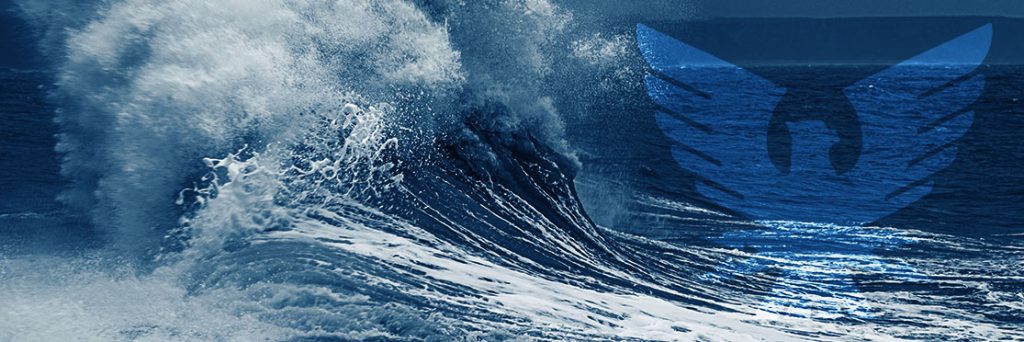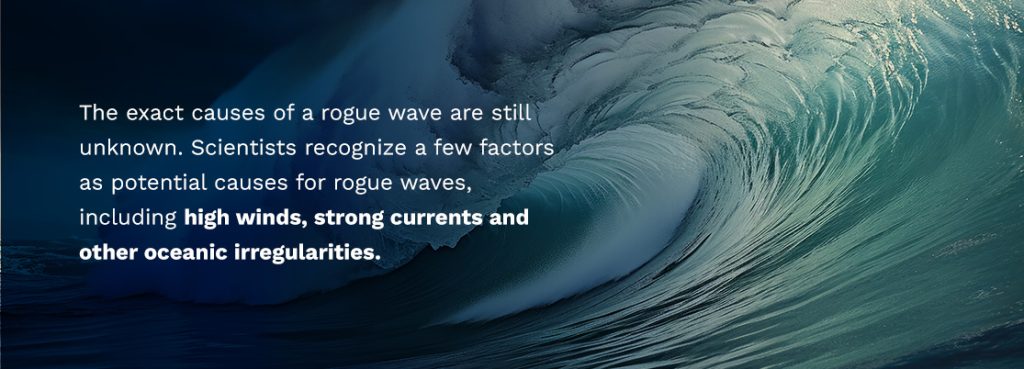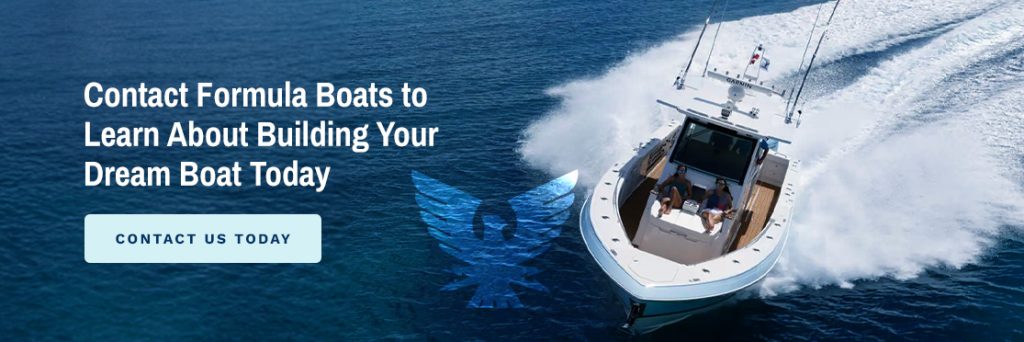
Rogue waves were once thought to be part of sea folklore and mythology. Known for their massive, monstrous and deadly nature, these waves can be a frightening phenomenon to anyone who witnesses them.
As more vessels hit the high seas, scientists learned that these unpredictable and scary wave patterns are far less rare than they once believed.
What is a rogue wave exactly? We are breaking it all down and sharing some practical tips for what to do when a rogue wave heads for your boat.
What Is a Rogue Wave?
A rogue wave is an unpredictable wave that forms suddenly and without warning. They are also known as freak waves, killer waves and monster waves.
Rogue waves are unusually massive compared to their surrounding surface conditions. They are typically twice the height of a standard wave and can wreak serious havoc as they crash. For centuries, scientists and oceanographers were stumped by the mysterious nature of these giant waves. Some people thought they were supernatural anomalies or caused by sea creatures. Now we know rogue waves are a naturally occurring phenomenon that is far more common than what we first thought to be true.
Where Do Rogue Waves Typically Occur?
As a boater, you probably want to know where these massive waves are likely to happen so you can avoid them as best as you can. Ultimately, a rogue wave can occur anywhere on the open ocean across the globe.
Most rogue waves occur away from the shoreline and in the middle of the seas, though they can crash near land. When these huge waves do meet the shore, they are called sneaker waves.
You could set out on a beautiful sunny day with calm seas and still come across a rogue wave while on the water. While you can encounter this type of phenomenon anywhere on the ocean, one of the most common geographic locations where rogue waves occur is South Africa’s southeast coast.

What Causes a Rogue Wave?
The exact causes of a rogue wave are still unknown. For years, mariners exchanged stories about colossal waves rising seemingly out of nowhere. As more people explore and learn about the water, we’ve discovered this phenomenon is common and likely occurs daily somewhere on the ocean.
Scientists recognize a few factors as potential causes for rogue waves, including high winds, strong currents and other oceanic irregularities. Despite the uncertainty, two main hypotheses exist for how and why rogue waves form.
- Focused wave energy: Some people believe these monster waves form due to the currents and waves interacting with each other. As the current puts pressure against the waves, it can shorten the wave’s frequency. This makes the waves merge together to create a bigger, more dangerous rogue wave.
- Constructive interference: As multiple wave patterns develop in the ocean, they can intersect to create interference patterns. This interference can generate particularly high peaks and deep troughs called wave reinforcement. Think of how the water’s surface would interact if you dropped two rocks into still water. The ripples from both rocks would merge together between them to generate a larger wave.
What Are the Chances of Getting Hit by a Rogue Wave?
There is still so much to learn about rogue waves, why they form and how common they are. Scientists do not know the chances of being hit by one of these massive walls of water. We do know these waves occur every day around the globe. Additionally, strong storms, choppy waters and powerful currents can increase the likelihood of seeing a rogue wave. However, this phenomenon can also occur seemingly out of nowhere on a day with calm water and good weather.
Do Rogue Waves Cause Damage?
A rogue wave can be strong enough to capsize the largest of ships. They grow to tremendous heights and can crash with intense pressure, which can be detrimental to any boat.
Small ships can be engulfed by these walls of water. Other boats can endure structural or cosmetic damage from a rogue wave without serious consequences like flooding or sinking. It all depends on the boat’s orientation on the water and the distance from the wave.
How Dangerous Are Rogue Waves?
Rogue waves can be extremely dangerous and even deadly. Some people believe killer waves are to blame for many vessels lost at sea. Their colossal strength and size make rogue waves a difficult opponent for ships.
One of the most recent and notable news stories about a fatal monster wave comes from December 2022, when one passenger was killed and four were injured on board the Viking Polaris cruise ship off the coast of Argentina after encountering a rogue wave.
Can a Boat Survive a Rogue Wave?
Yes! While rogue waves can sink vessels as large as an oil rig, many ships survive without extensive damage or disabling.
Rogue waves are unpredictable, so those navigating the open ocean should stay vigilant and take advantage of any forewarning, even if it is only seconds. You may be able to position your boat to minimize damage and harm.
What Do You Do if You Encounter a Rogue Wave?
When there is a large wave on a boat, you have to act fast. If you can, it’s best to maneuver your vessel toward the wave’s shoulder, where it doesn’t reach its peak height. You may be able to avoid the most dangerous impact.
Overall, it is better to face a rogue wave head-on than to turn at an angle. Stay calm, and always make sure your crew wears personal protective gear before getting out on the water.

Contact Formula Boats to Learn About Building Your Dream Boat Today
At Formula Boats, we aim to provide our customers with the best boating experience possible. We offer a vast selection of new and used inventory. If you can’t find exactly what you need, we also allow you to customize a vessel with our digital build-a-boat tool.
Helping you achieve the safest and most fun time on the water is our goal. Our team will help you at every step along the way.
Are you ready to find or build your dream boat? Contact Formula Boats, or find a dealer in your location today!
